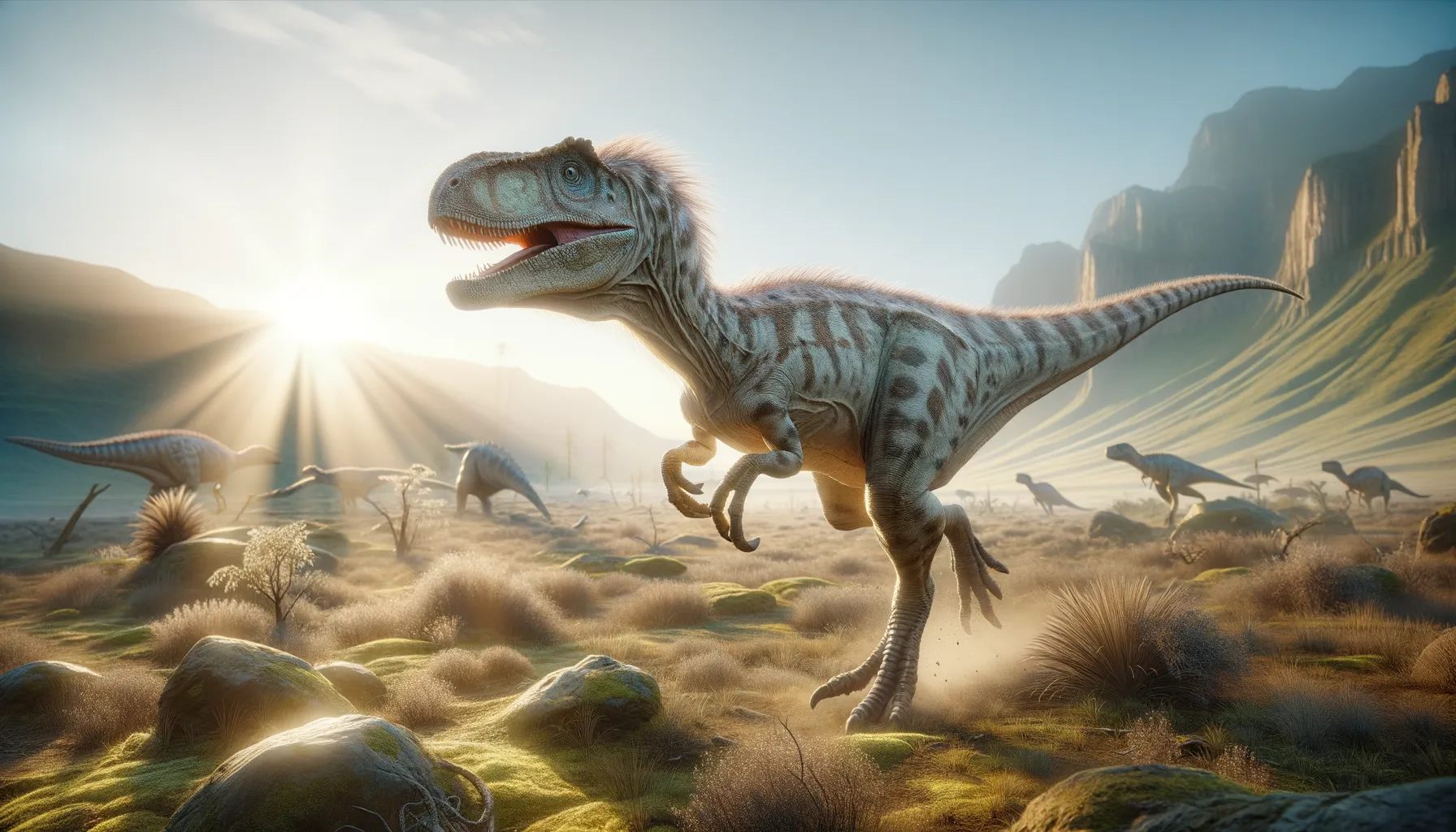
Lucianovenator
Small but swift, a Triassic sprinter!
Period
Triassic
Length
Roughly 2 meters (6.5 feet) long.
Height
Around 0.5 meters (1.6 feet) tall at the hip.
Weight
Approximately 10-15 kg (22-33 lbs).
Lucianovenator was a small, agile predator that roamed the ancient landscapes of what is now South America during the Triassic period. With its light body and long legs, it was well-adapted to chasing down prey. As a member of the early group of theropods, Lucianovenator showcases the evolutionary beginnings of some of the most famous dinosaur predators that would later dominate the Jurassic era.
Diet
Lucianovenator was a carnivore, preying on smaller animals available in its habitat. Its diet likely consisted of small vertebrates like ancestral mammals, lizards, and perhaps insects.
Hunting
This dinosaur likely relied on its speed and agility to catch prey, using its sharp teeth and claws. Lucianovenator might have hunted solo or in small groups to make the most of its abilities.
Environmental challenges
Lucianovenator lived in a dynamic environment with varying climate conditions and landscapes. It had to adapt to changing temperatures and possibly scarce resources during dry periods. Competition for food with other predators would have been a constant challenge, pushing its need for swift and efficient hunting.
Speed
It was likely a fast mover due to its agile build.
Lifespan
Estimated to live around 10-15 years.
First discovery
First discovered in Argentina in 2016.
Fun Facts
- Lucianovenator was a small, fast-moving dinosaur that lived during the Late Triassic period.
- This dinosaur's name means 'Luciano's hunter,' named in honor of Argentine paleontologist Luciano Leyes.
- Fossils of Lucianovenator were discovered in Argentina in the Ischigualasto Formation, a site known for its rich deposits of early dinosaur species.
- Lucianovenator is classified as a theropod, which is a group that includes some of the most well-known carnivorous dinosaurs such as Tyrannosaurus rex.
- Despite its fierce name, Lucianovenator was relatively small, with estimates suggesting it was only about 2 meters (6.5 feet) long.
- The discovery of Lucianovenator helps scientists understand the early diversity and evolutionary history of theropod dinosaurs.
- Lucianovenator lived in a time of significant evolutionary change, eventually leading to the dominance of dinosaurs in the Jurassic period.
Growth and Development
Hatching from eggs, Lucianovenator juveniles were likely vulnerable and required rapid growth to survive. As it matured, its features such as sharp teeth and powerful legs developed to better suit its predatory lifestyle. The growth rate might have been influenced by food availability and environmental pressures.
Habitat
Lucianovenator thrived in forested and open areas, providing hunting grounds and enough cover to stay hidden from larger predators. The variety in its habitat allowed it to adapt to different prey and changing conditions. Seasonal variations affected resource availability, encouraging it to adapt and seek diverse food sources.
Interaction with other species
As a small predator, Lucianovenator may have interacted primarily with similar-sized animals, both as potential prey and competition. It likely avoided larger predators to prevent becoming prey itself. Its presence in the ecosystem might have influenced the evolution of its prey species and competitors.
Natural lifespan
Lucianovenator's natural lifespan was about 10-15 years.
Reproduction
Lucianovenator reproduced by laying eggs, with nests likely constructed in secluded and protected areas. Parental care, if present, would have been limited but crucial in the early stages of the offspring's life. The survival of juveniles depended on both genetic traits and environmental conditions.
Social behaviour
There is limited evidence of complex social behaviour, but Lucianovenator may have occasionally hunted in small groups. Social interactions could have included cooperation for hunting and protection from larger predators. Communication would have been based on visual and auditory signals.
Fossil locations
Fossils of Lucianovenator have been found in the Ischigualasto Formation of Argentina. These sites provide crucial insights into the Triassic ecosystem of that region. The fossil findings help paleontologists understand the diversity of early theropods.
